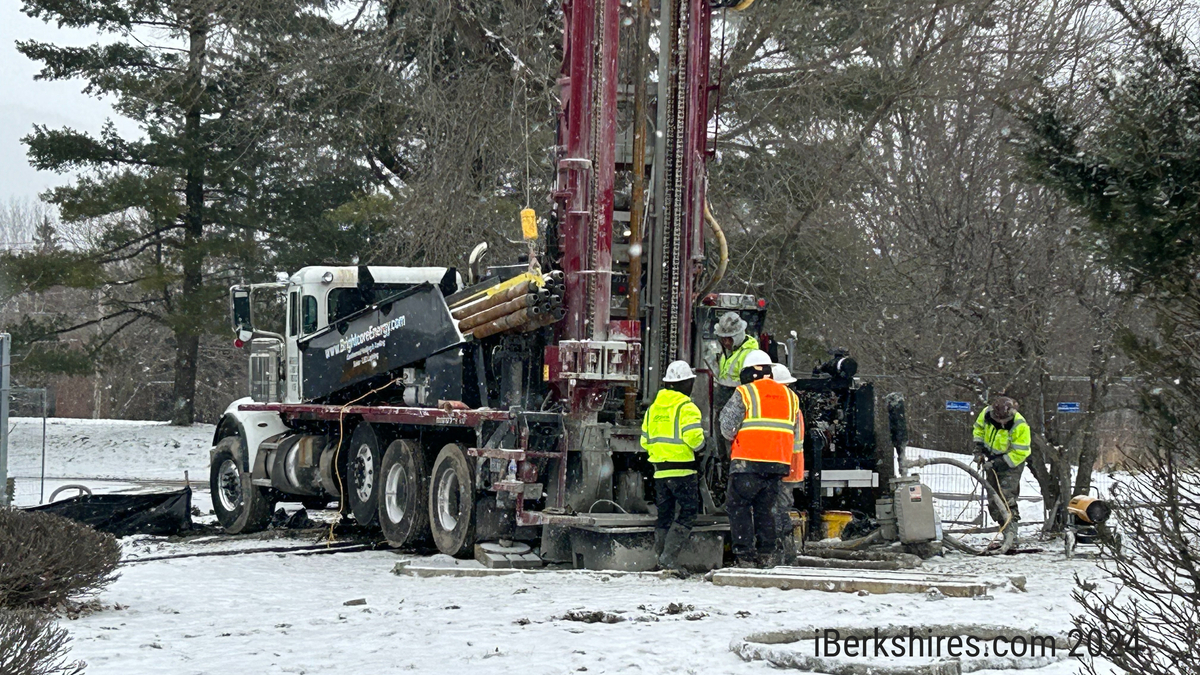Williams College Testing for Geothermal Capacity at New Museum SiteBy Stephen Dravis, iBerkshires Staff
12:59PM / Wednesday, January 17, 2024 | |
 A crew from Brightcore works Tuesday morning at the former site of the Williams Inn in Williamstown. A crew from Brightcore works Tuesday morning at the former site of the Williams Inn in Williamstown. |
WILLIAMSTOWN, Mass. — Williams College is doing the ground work for a new art museum at the former site of the Williams Inn.
Actually, it is doing the underground work.
This winter, the college is drilling a test well near the Field Park rotary to assess the terrain's capacity to produce geothermal energy for the planned museum.
A crew from Armonk, N.Y.'s, Brightcore Energy has been working on the site, setting the stage for a project that could supply a significant percentage of the heating and cooling needs for the museum the college is planning to replace the current facility at Lawrence Hall.
"The location of the test well is in the range of area where we expect to locate the well field, which will start in that vicinity and bend around the northeast corner of the site towards Town Hall," Devon Nowlin, the college's museum project director, wrote in an email reply to an inquiry about the project. "After the test is complete, that well will become part of the final well field.
"We expect that 33 wells will provide 80 percent of the heating and cooling load of the building. Depending on the conductivity results of this test well, we may elect to increase the number of wells to reach 100 percent of the load."
The results of the current test will help inform the college about how many wells would be needed to reach the 100 percent goal, Nowlin wrote.
According to the U.S. Environmental Energy Agency's website, the slow decay of radioactive particles in the Earth's core produces geothermal energy, which has been used since ancient times for bathing, cooking and heating by harnessing the power of hot springs.
Modern technology uses heat pumps to harness the energy already present below the Earth's surface.
According to the government website, the temperature of the earth 10 feet below ground level remains consistently between 50 and 60 degrees, meaning it is cooler than the above-ground air in the summer and warmer in the winter.
"Geothermal heat pumps transfer heat from the ground (or water) into buildings during the winter and reverse the process in the summer," the website explains.
Williams College has recent experience using geothermal technology to heat and cool its buildings.
Fort Bradshaw, a residence on South Street for graduate students in the college's art program that reopened in 2021, uses 10 geothermal wells to "nearly eliminate reliance on fossil fuels," according to the college website.
Fellows Hall, a net-zero residence hall for students in Williams' Center for Development Economics program, also has 10 geothermal wells.
An article published this month by the college's Zilkha Center for Environmental Initiatives notes that the new museum planning process has, "Notable goals [including] achieving the International Living Future Institute’s Living Building Challenge Core Certification [and] an energy use intensity target (energy use per square foot per year) of 70."
| 
